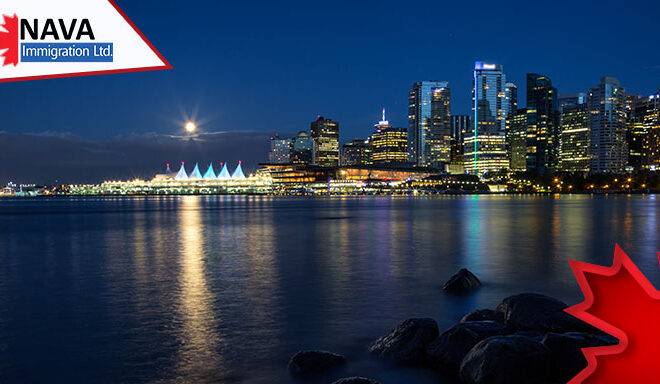Canada’s Immigration Levels Plan 2024-2026
Yesterday, on November 1, 2023, Canada declared its Immigration Levels Plan 2024-2026. Canada’s immigration levels will stay intact from their current immigration targets. In its latest level plans, Canada aims to admit 485,000 newcomers in 2024, and in 2025 and 2026, Canada expects to admit 500,000 newcomers annually.
The Country’s immigration targets align with those declared in the Immigration Levels Plan 2023-2025.
What’s new in the latest immigration levels plan is the newcomer target for the year 2026, as well as the adjustments to the number of immigrants admitted under each class and program between 2024-2026.
Class-by-Class Allocations of Immigration Targets
This section will discuss the class-wise immigration target for 2024-2026.
Economic class
Canada plans to welcome around 281,135 newcomers under the economic class in 2024, which accounts for 58% of the yearly target. By 2026, this target is projected to rise to 301,250 newcomers, which is 60 % of the yearly target.
Family class
Under the family class immigration, it will accept 114,000 newcomers in 2024, which is 24 % of total entries. This target will increase to 118,000 immigrants by 2026, which will also account for 24% of total admissions.
Humanitarian Class
In 2024, the immigration targets under the Humanitarian class will be 89,865 immigrants, which is about 19% of the total admissions. These immigrants include protected persons, refugees, and individuals accepted for compassionate, humanitarian, or other reasons. The target for 2026 will be 80,832 newcomers, which accounts for 16% of admissions.
It’s notable that these numbers or targets might not sum up to exactly 100% due to rounding.
Immigration Targets for Express Entry and PNP Increases
For 2024, Canada’s Express Entry target is to admit 110,700 permanent residents, which will increase to 117,500 newcomers annually in 2025 and 2026.
Canada’s immigration target under the Provincial Nominee Program (PNP) will be 110,000 newcomers in 2024, which will increase to 20,000 immigrants in 2025 and 120,000 immigrants in 2026.
Canada aims to admit 82,000 newcomers in 2024 under the Spousal, Partner, and Children sponsorship. This target will increase to 84,000 yearly in both 2025 and 2026.
Furthermore, in 2024, Canada’s Parents and Grandparents Program (PGP) target is 82,000 immigrants, which further increases to 34,000 yearly both in 2025 and 2026.
Canada’s Efforts to Stabilize Immigration Levels
In the recently released Immigration Levels Plan 2024-2026, it was discovered that the immigration targets stay intact. The Canadian government clarifies why Canada’s immigration targets in this plan remain unchanged. It stated that the new plan is designed to improve the Country’s economic growth along with addressing the challenges in areas such as healthcare, housing, and infrastructure. It provides a suitable path for maintaining sustainable and stable population growth. The government intends to keep the immigration target of permanent residents at 500,000 beginning in 2026. This will give proper time for successful integration while continuing to strengthen and expand the Canadian labor market. Additionally, the government also aims to take necessary steps to adjust the number of temporary resident entries over the coming year. This will guarantee that this component of the Canadian immigration system also stays viable.
According to the central immigration law in Canada, the Immigration and Refugees Protection Act (IRPA), in non-election years, the federal government is obligated to release its yearly immigration plan by November 1.
The Immigration Levels Plan serves as the guideline for how many new permanent residents will be allowed to enter Canada over the upcoming three years under the following three immigration categories:
- Economic,
- Family, and;
- Humanitarian.
The plan aligns with the objectives of Canada’s immigration department, IRCC, to enhance the economy of the Country, reunite families, and make Canada a safer country for people experiencing humanitarian crises and escaping oppression.
Canada created history by admitting an all-time high of 437,000 immigrants in 2022, and the 2023 immigration target for permanent resident admissions is 465,000.
Canada’s New Strategy to Enhance the Immigration System
Canada announced the Immigration Levels Plan 2024-2026 just one day after it released a fresh strategy to improve and strengthen its immigration system.
Canada’s immigration Minister, Marc Miller, recognized the weaknesses in the Country’s current immigration system and revealed a new strategy for an even better immigration approach on October 31. He highlighted the pillars of a new approach to modernize the system.
The new strategy is called an Immigration System for Canada’s Future and has three main purposes:
- Develop a more welcoming environment for new immigrants
- Integrating immigration with labor market needs
- Create an extensive and synchronized growth strategy
The IRCC department intends to offer a more satisfactory and user-friendly experience to its clients while also integrating Canada’s immigration policies with its skills and labor market strategy.
Furthermore, IRCC aims to build an integrated and extensive plan by collaborating with all three levels of government in Canada. This will guarantee that the Country is capable of providing sufficient health care, housing, and infrastructure facilities to the increasing number of newcomers to the Country.
Canada’s Immigration Levels Expansion From the late 1980s
In the late 1980s, Canada’s immigration strategy started to change toward its current form. Prior to this, the Canadian government did not focus as much attention on future immigration planning and instead set immigration targets on the basis of the current economy at that time.
In 1984, Canada admitted around 90,000 immigrants,
At the beginning of the 1990s, the federal government, then led by the Conservative party, acknowledged that there would soon be a labor shortage in the Country. As a result, it raised the immigration target to 250,000 new PRs within eight years.
Afterward, in 1993, when the Liberal government was elected, it continued to expand the immigration targets. This government emphasized admitting immigrants from the economic class and lowered its immigration targets for the family and humanitarian class in order to support the Country’s economy at the time of crisis.
Until the current Liberal government was elected in 2015, approximately 260,000 immigrants were planned to enter Canada each year.
The immigration level targets were expanded to 300,000 under the current federal government led by Prime Minister Justin Trudeau. Afterward, the target was raised to 340,000 prior to the beginning of the COVID-19 pandemic in 2020.
In 2021, Canada welcomed a record-breaking 405,000 new Permanent residents despite the restrictions of the COVID-19 pandemic.
Presently, Canada is experiencing a housing shortage and affordability issues, due to which multiple polls are showing less excitement among Canadians for immigration compared to previous years.
Still, the IRCC department continues to keep high immigration targets due to the critical labor shortage of skilled workers caused by the low birth rate and the upcoming retirements of millions of Canadian employees as they are reaching 65. A recent report by Statistics Canada on population estimation highlights that approximately 98% of Canada’s population growth is due to new immigrants to the Country.
According to the latest job vacancy data, there were 701,300 vacant positions in Canada as of July 2023. Although this is a year-over-year decline of 273,700 available positions, it’s still significantly sufficient for IRCC to implement new changes to popular immigration programs as well as systems like Express Entry.
Earlier this year, IRCC initiated category-based draws under the Express Entry in order to target economic immigrants who can help bridge the labor market gaps. Candidates who have work experience in any high-demand sector or who have high French language abilities to promote it in non-french proficient areas other than Quebec are selected in these draws.
Quebec’s Immigration Levels Plan for 2024 and 2025.
Yesterday, Quebec also announced its immigration levels plan for 2024 and 2025, the same day the Canadian government declared Canada’s Immigration Levels Plan for 2024-2026.
In Canada, Quebec is the only province that is authorized to decide its annual immigration targets for permanent resident admissions. This is possible because Quebec has a special status in Canada, which allows it
to determine its immigration targets in order to retain its distinctive francophone character. In its immigration plan, it announced that in both 2024 and 2025, it is expecting to admit 50,000 new immigrants each year.





